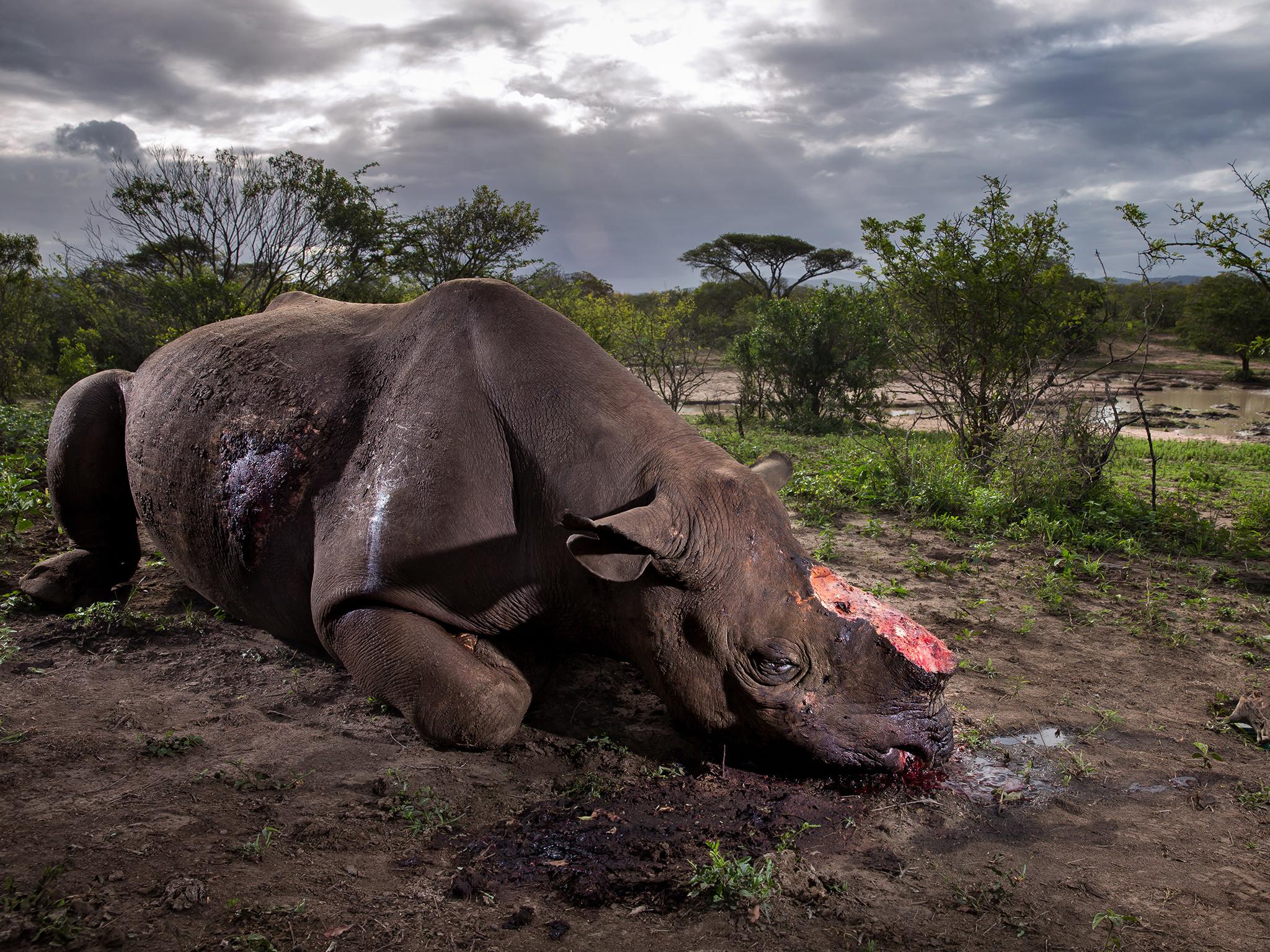Shocking image of black rhino killed by poachers wins Wildlife Photograph of the Year
Photo beats almost 50,000 others to claim prestigious prize

Your support helps us to tell the story
From reproductive rights to climate change to Big Tech, The Independent is on the ground when the story is developing. Whether it's investigating the financials of Elon Musk's pro-Trump PAC or producing our latest documentary, 'The A Word', which shines a light on the American women fighting for reproductive rights, we know how important it is to parse out the facts from the messaging.
At such a critical moment in US history, we need reporters on the ground. Your donation allows us to keep sending journalists to speak to both sides of the story.
The Independent is trusted by Americans across the entire political spectrum. And unlike many other quality news outlets, we choose not to lock Americans out of our reporting and analysis with paywalls. We believe quality journalism should be available to everyone, paid for by those who can afford it.
Your support makes all the difference.A shocking photo of a rhinoceros that was slaughtered for its horns has been named Wildlife Photograph of the Year 2017.
The image was taken by South African photographer Brent Stirton in the luhluwe Imfolozi Game Reserve in north-eastern South Africa.
It shows a black rhino slumped in the mud with a raw, fleshy area where its horns used to be. The animal was shot during the night by poachers who used a gun with a silencer to avoid being detected. They then hacked off the rhino’s two horns, which in some Asian countries have a street value higher than gold or cocaine.
In China and Vietnam, rhino horn, which is actually made of the same material as human toe and finger nails, is believed to cure an wide array of illnesses. Black rhinos are now a critically endangered species, largely because of the illegal trade in their horns. There are thought to be only around 5,000 left in the world.
The image, named Memorial to a Species, is part of a series captured by Mr Stirton. He visited more than 30 sites at which animals had been killed.
He told BBC News: “My first child is going to be born in February; I'm 48. And I think I left it such a long time because I kind of lost faith in a lot of the work we see as photojournalists. You lose faith in humanity to some extent.
"For me to win this, for the jury to acknowledge this kind of picture - it's illustrative that we are living in a different time now, that this is a real issue. The sixth age of extinction is a reality and rhinos are just one of many species that we are losing at a hugely accelerated rate and I am grateful that the jury would choose this image because it gives this issue another platform."
Mr Stirton’s image beat almost 50,000 entries from 92 countries after being selected by an international panel of judges.
The winners’ awards were handed out at a gala dinner at the Natural History Museum, where all 99 finalist images will be on display from 20 October, before they go on tour across the globe.
Sir Michael Dixon, the museum’s director, said: “Brent’s image highlights the urgent need for humanity to protect our planet and the species we share it with. The black rhino offers a sombre and challenging counterpart to the story of ‘Hope’ our blue whale. Like the critically endangered black rhinoceros, blue whales were once hunted to the brink of extinction, but humanity acted on a global scale to protect them. This shocking picture of an animal butchered for its horns is a call to action for us all."
In other categories, Daniel Nelson from the Netherlands won the 15-17-years-old award for his image of a gorilla with a breadfruit in the Republic of Congo.
Join our commenting forum
Join thought-provoking conversations, follow other Independent readers and see their replies
Comments